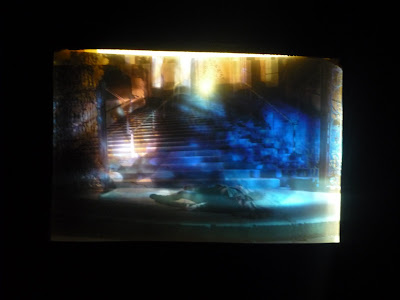

After the de-installation of my SITE work it gets lugged back to Water street for storage. Won't fit in the apartment so it's currently hanging out downstairs until the landlord tells me to move it elsewhere.









Devoid of any actual moving image, StillMoving rests in the space between cinema and photography, and reflects Deleuze’s theory of the time-image; ‘an image in which time ceases to be subordinate to movement and appears for itself.’ The movement stems from action, rather than relying on a motion picture; and becomes a still image where movement is propelled by the viewer.
Focus is taken away from the cinematic and given back to the photographic.
An image may only ever be a representation; never the actual thing it is depicting, never the ‘truth’ as it was once believed to be. Perhaps the only actuality to which the image can be assigned is its indexical factor; that it is no more ‘real’ than the silver emulsion on paper, or the pixel on a screen. StillMoving aims to highlight this falsified reality.



















 here technology is advancing towards multi-dimensional viewing. Viewing, in this sense, can become an experience. This in turn also places emphasis on time and space.
here technology is advancing towards multi-dimensional viewing. Viewing, in this sense, can become an experience. This in turn also places emphasis on time and space.
Cityscapes from Emily Hlavac-Green on Vimeo.













